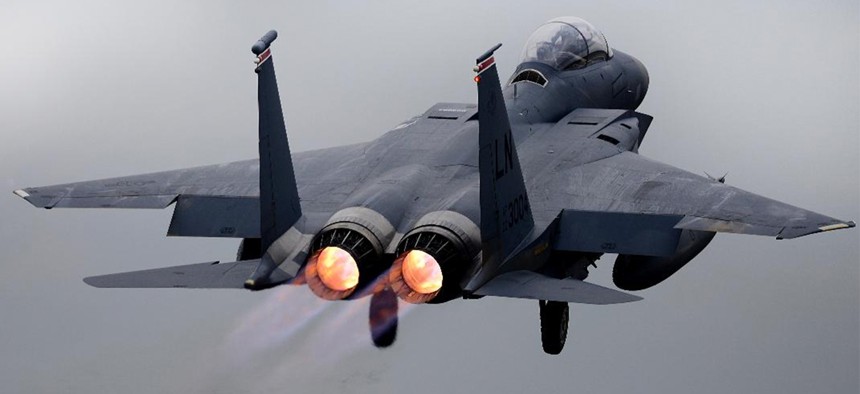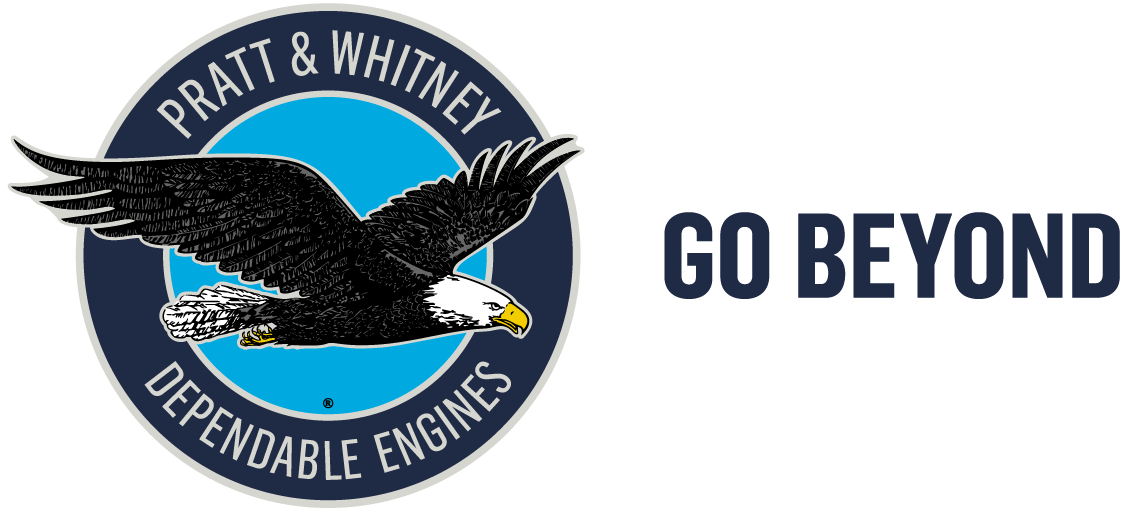sponsor content What's this?

An F-15E Strike Eagle assigned to the 494th Fighter Squadron takes off for a training sortie at RAF Lakenheath, U.K., Oct. 26, 2018. The 494th FS trains regularly to ensure RAF Lakenheath brings unique air combat capabilities to the fight. U.S. Air Force photo by Tech. Sgt. Matthew Plew
Why the F100 Engine Is the Best Choice for the F-15EX
Pratt & Whitney draws on its decades-long relationship with the U.S. Air Force to support evolving models and missions on the F-15 program, effectively and cost-efficiently.
Presented by
Pratt & Whitney

When it comes to aircraft reliability and sustainment, the most essential aspect might be the most difficult to build: trust. That’s the sentiment of Kelly Young, the F100 Program Senior Director at Pratt & Whitney, who oversees the development, production, maintenance and sustainment infrastructure for P&W’s support to the U.S. Air Force for the F100 engines that power every USAF F-15 variant — and have done so for nearly 40 years.
“There’s very much a partnership between Pratt & Whitney and the U.S. Air Force, especially from an engineering and sustainment perspective,” says Young, who has worked on the program for nearly a decade. “We partner together to problem solve, and we look for their feedback on ways to make our product better.”
Over time, this relationship between the Air Force and the aerospace manufacturer continues to evolve as the two operate in new environments, ultimately bolstering and expanding the program.
The F100 engine has powered every operational F-15 in the Air Force since 1972 when the aircraft first took flight. It has served every consecutive variant as the Air Force conducted countless successful combat operations around the world. It’s that level of understanding and communication Young believes has helped Pratt & Whitney successfully usher in several new engine types for evolving variants over the years. That includes the F100-PW-229 engine, the latest evolution of the F100 family that is still in production today and extends the depot service interval by 40%, bumping the average service life between overhauls from 7 years to 10.
“Incorporating the -229 engine on the F-15 entailed applying a substantial amount of learning to the process,” Young says.
“Now, we know how to continue to make sure that, that infrastructure is in the right place for the Air Force,” she says. “A lot of our field reps have been in place for 7-plus years. They sit with the customer, they understand and share the mindset of the customer, and they’re working and advocating for the customer back at Pratt and Whitney’s home base to ensure addressing challenges or communicating wins so we can transfer new best practices to additional sites.”
Supporting New Aircraft with Established Methods
Now, as the Air Force looks to introduce a new variant of the F-15 — the F-15EX, which aims to provide even more advanced capabilities to the warfighter — Pratt & Whitney is confident their long-established relationship will serve both well as the two turn their attention to the new aircraft.
“The USAF will benefit from our extensive, existing F100 maintenance infrastructure at the USAF F-15 bases,” says Young, noting this will result in lower costs for aircraft and engine sustainment. “And because the F100 already powers every operational F-15 in the USAF fleet, selecting the F100 to power the F-15EX fleet will make the transition from F-15C to F-15EX much more seamless.”
Essentially, the maintenance equipment, training, and manuals for the F100-F-15 relationship already exist. Only minimal changes are needed to update the F100 for the F-15EX when compared to supporting an entirely new engine, says Young. And with more than 28 million flight hours under its belt, the F100 fighter engine has a world class safety, maintenance and reliability record.
Moreover, as the mission continues to evolve and fleet and mission needs grow, Pratt & Whitney plans to transfer advanced technologies from its fifth-generation engines with highly integrated engine/airframe flight control systems — the F119 engine, which features vectored thrust and powers the F-22; and the F135, which enables short takeoff and vertical landing capabilities for the F-35 — into the F100 engine to support new capabilities.
Looking toward the future of warfare, Young believes long-standing relationships can help forge new paths most effectively for the Air Force as the battlefield continues to evolve.
“The pure infrastructure, the support equipment and how we have teamed with the Air Force over the last 20 years on ergonomics, for example, and improving maintenance practices, those alone are invaluable,” she says. “Things that we learn, we share with the Air Force, things they learn, they share with us to make the product and tooling better — that relationship and history is so important and takes a lot of time and energy to build.”
Ultimately, it’s all about trust.
“I still have a shop chief that I met six years ago that calls me today and keeps in touch, and he knows that when we say we’re going to help, we’re going to help,” she adds. “That trust becomes really, really important.”
This content is made possible by our sponsor Pratt & Whitney; it is not written by and does not necessarily reflect the views of Defense One’s editorial staff.
NEXT STORY: How to Overcome Challenges of Managing Hybrid, Multicloud Environments



